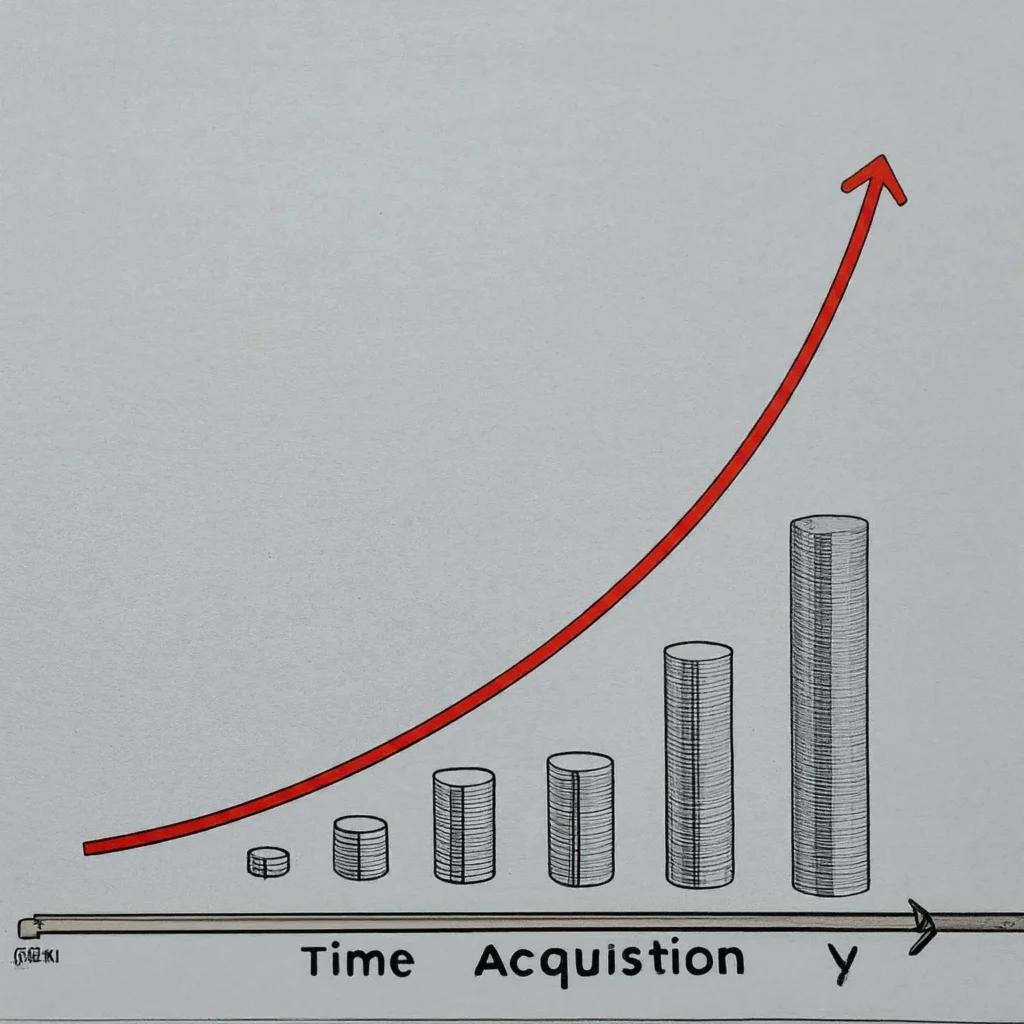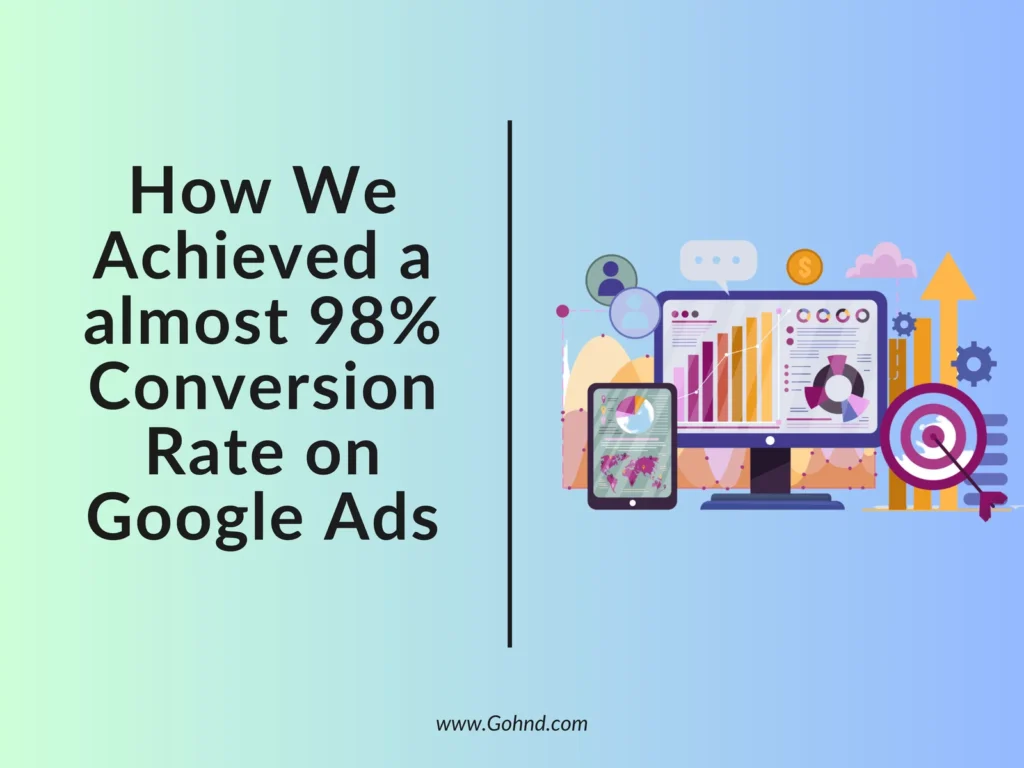What Caused the 460% Spike in Client CAC?
What Caused the 460% Spike in Client CAC? This blog isn’t your typical digital marketing success fairy tail story where businesses boast about skyrocketing profits. Nope, this one’s a bit different, and believe us, it’s worth the read. Now, you might be wondering why we’re bragging about increasing a client’s CAC by a whopping 460.63%. Why on earth would we do that, and why are we talking about it here? Take a deep breath and bear with us. We’ll explain everything! Yay! We gotta a new client!! About a year ago, we welcomed a new B2C client into our fold. Their Google ads were previously managed by a renowned agency in the Digital Marketing industry, which we’ll refer to as Agency X for the sake of this post. Our client, in the B2C sector, was looking for inquiries from ready-to-buy customers. Despite Agency X’s tenure managing their Google Ads account, the founder wasn’t satisfied with the results. Through a referral from a friend, they discovered our expertise in the industry, backed by seven years of solid experience. Naturally, the decision to collaborate was a no-brainer for the client. The Before and After: Agency X vs. HND Solution’s Approach Let’s dive into the tale of two strategies: what Agency X was up to before we stepped in and how our approach turned the tide for our new client’s Google Ads campaign. Let’s dive into how Agency X operated. Agency X used most of the types of the campaigns available in Google Ads, they ran different types of campaigns, like Performance Max, Search, Display, and Smart campaigns. A big chunk, about 41%, budget was allocated to Performance Max.On Google’s dashboard, things looked okay with a CPC of $2.60 and a seemingly fair CAC of $29.25. Our Strategy at HND Solutions When we took over, we didn’t waste any time. First, we hit hard on Performance Max, pausing all campaigns created by Agency X. We had a different perspective on lead generation with Pmax, which we’ll discuss later in this post. As for the Search campaign, it had potential, but there was room for improvement. We made some tweaks to optimize it and kept it running to maintain the lead flow. Meanwhile, we swiftly moved on to creating new campaigns targeting different locations and keywords based on our industry experience. Recognizing the need for a better landing page, we decided to scrap the old one and design a new, more effective page. After thorough research and planning, we implemented this new page across all campaigns. To ensure comprehensive lead tracking, we implemented our inbuilt tracking system. This system allows us to track the progress of leads from start to finish, providing insights into lead quality and conversion rates. In terms of budget allocation, we allocated about 80% of the budget to Google Ads and the remaining 20% to Facebook ads, optimizing our resources for maximum impact. A Results Comparison: Agency X VS HND Solutions In our analysis of the performance shift between Agency X and HND Solutions, the numbers speak volumes. Under HND ‘s management our strategies led to a remarkable shift in the metrics, the Cost Per Click (CPC) increased by a staggering 255.77%, accompanied by a parallel surge in overall cost, soaring by 256.65%. However, the picture isn’t all rosy; the number of leads plummeted by 36.38%. The most alarming statistic, though, is the Cost of conversion (CAC), which skyrocketed by 460.63%. This significant spike in CAC, due to surge in CPC and overall cost, contributed to a notable reduction in leads. For a closer look at the numbers, refer to the comparison table below! # CPC Cost Leads CAC Agency X $2.60 $51,453.99 1759 $29.25 HND Solutions $9.25 $1,83,509.30 1119 $163.99 Change 256% ↑ 257% ↑ -36% ↓ 461% ↑ Now, you might be wondering why we chose to increase our overall expenses despite these seemingly negative outcomes. Hold your horses and read on to find out the reason behind our strategy. Win or Lose? Looking at the numbers above, you might assume we took a beating and lost the project. But let me set the record straight: the client was thrilled with our results. It wasn’t about throwing money away; it was about putting faith in our strategy and giving us the time to execute it effectively, delivering tangible returns. So, what changed after we launched all our campaigns? First and foremost, overall sales saw a significant uptick. Despite the decrease in the number of leads, the sales ratio surged. This was because the leads we generated were of higher quality, leading to more conversions. Interestingly, while the cost of leads skyrocketed, the cost per sale actually decreased. This means that although each lead came at a higher price, the efficiency of our campaigns resulted in lower costs for acquiring customers. In essence, it was a win-win situation, where our client saw tangible growth in their business while maintaining a more cost-effective approach to customer acquisition. Additionally, our strategy had a ripple effect on their sales team morale. With a majority of the leads we delivered being serious consumers actively seeking to make a purchase, the sales team found themselves in high spirits. They noticed a significant decrease in the number of calls they had to make per day, yet their sales numbers were on the rise. What was wrong? In dissecting the situation, we first analyzed the metrics to pinpoint areas of concern. The staggering 36.38% reduction in leads immediately caught our attention. However, a deeper examination revealed that most of these leads were of poor quality, essentially wasted opportunities. Lead-to-Acquisition Ratio: Previously, it took an average of 25 leads to secure a single sale, indicating a worst quality leads. By refining our approach to prioritize quality over quantity, we successfully improved the lead-to-acquisition ratio to 1 sale per 3 leads, a considerable enhancement for the client’s sales team. Cost Analysis: # Cost Leads Sales Cost Per Sale Agency X $51,454 1759 70 $731.30 HND Solutions $1,83,509


